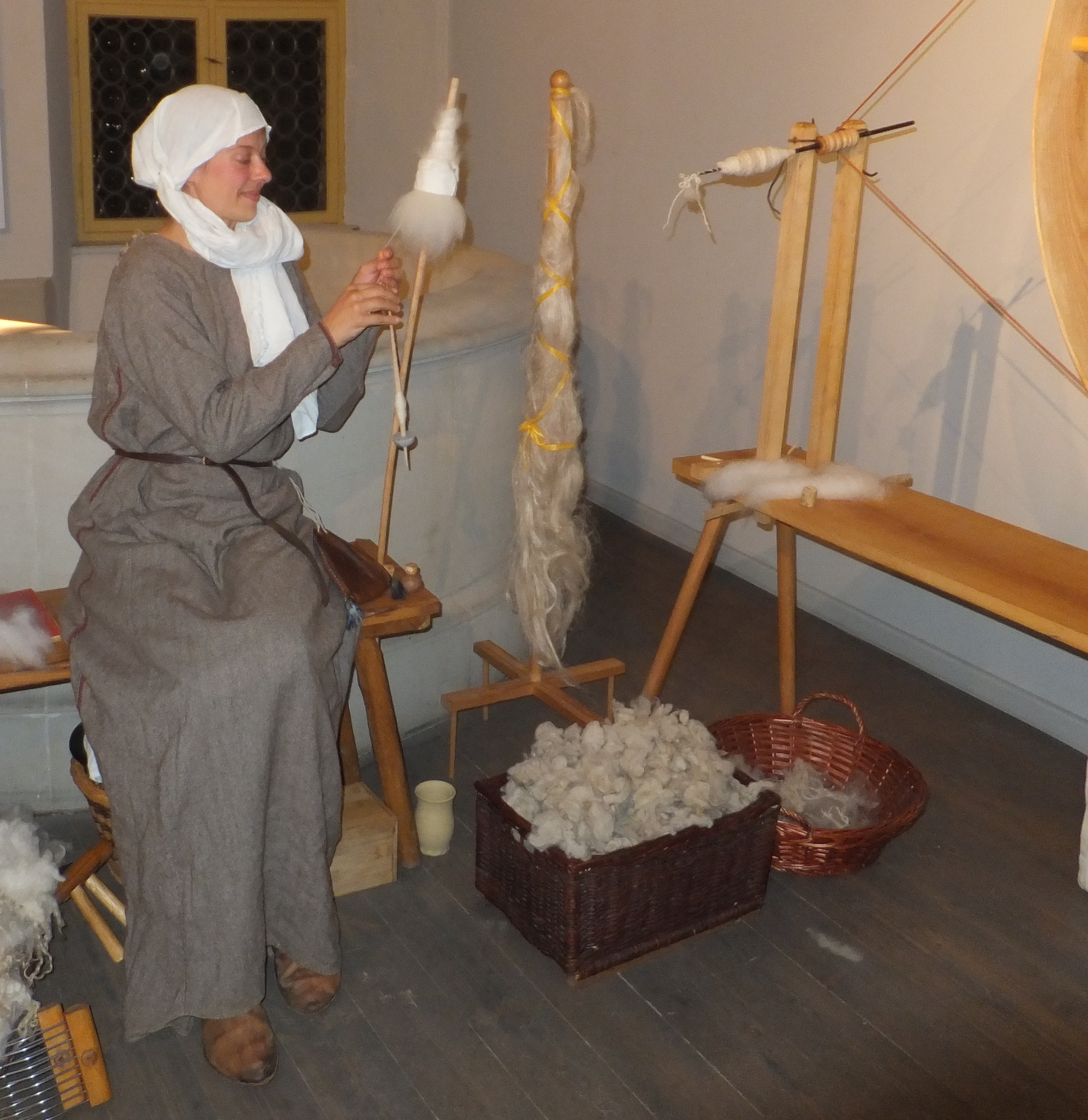There are a few differences between medieval hand-spindles and the hand-spindles commonly available and commonly used today. One of the most obvious of these differences: Medieval-style spindles, as opposed to modern spindles, don’t have the whorl attached permanently. Instead, the shape of the two pieces makes it possible to attach the whorl to the tapering stick by just pushing it on. This means easier storage of the spindles plus more flexibility, as you can use one whorl with several sticks, or exchange the whorl for a lighter one to account for more weight of the yarn on a partly-filled spindle stick. You could also use the filled spindle stick directly as a shuttle for weaving on a warp-weighted loom, if you were so inclined.
If you have been spinning with modern spindles and are switching to medieval-style spindles now, you might be concerned about the whorl slipping off the spindle stick. This can definitely happen, but it is avoidable with the right technique.
The method of fitting the whorl onto the spindle stick relies on enough friction between the two parts. To avoid the whorl falling off, there are two things to take into account: Firstly, fitting it securely enough when you place it on the stick, and secondly, making sure that there is no downward pressure onto the whorl while working.To fit the spindle whorl to the stick, I recommend sliding it up the stick as far as it will go up easily, then give a light twist to the whorl and gently pressing it upwards at the same time. Gentle pressure will suffice, as will just a few millimetres of twisting of the spindle against the whorl. It should now sit quite firmly on the shaft. You can test the fit by gently tugging downward on the whorl; it should not budge.
If you have mounted the whorl like this, it should stay there throughout your spinning. If you drop the spindle, the whorl might come off – that is perfectly normal, just put it back into place as before, and carry on.
If the whorl falls off even though you have not dropped the spindle, there are two possible reasons for this.
Read more: Medieval Spindles - Hints on Spinning and Winding

















